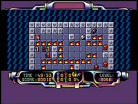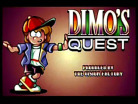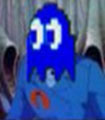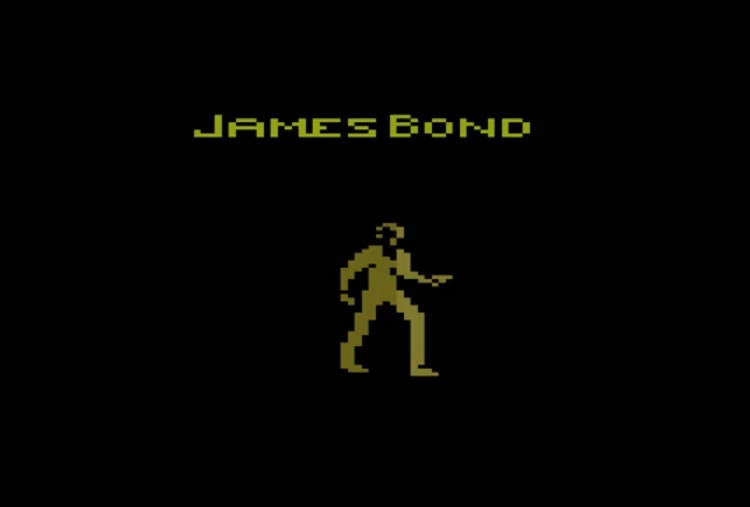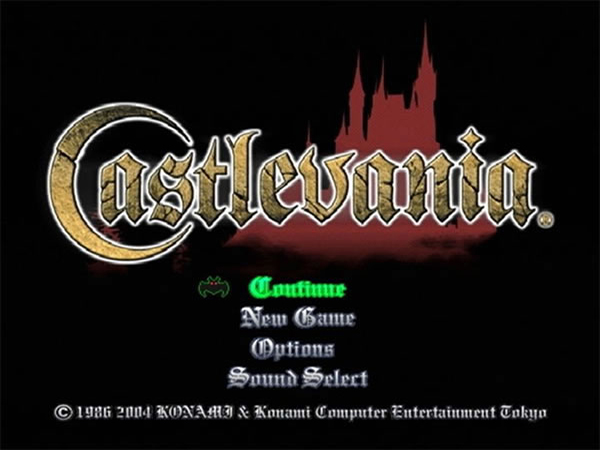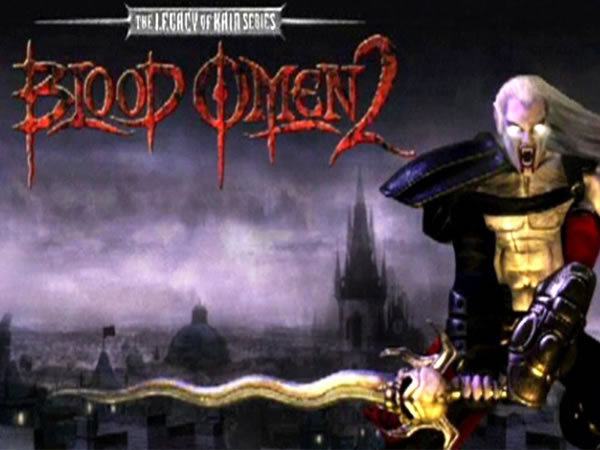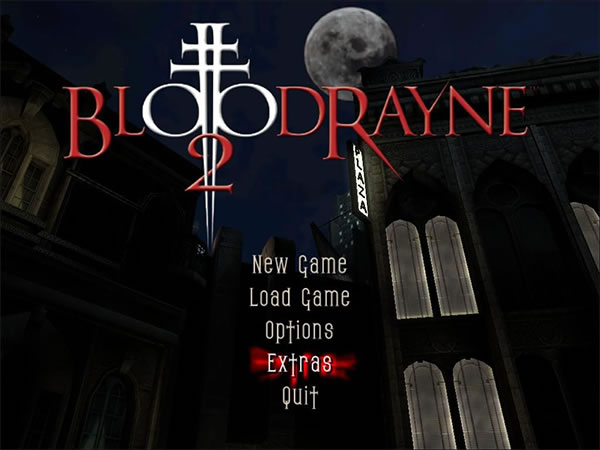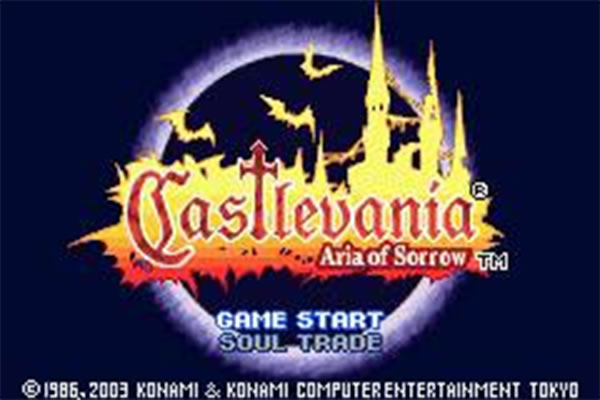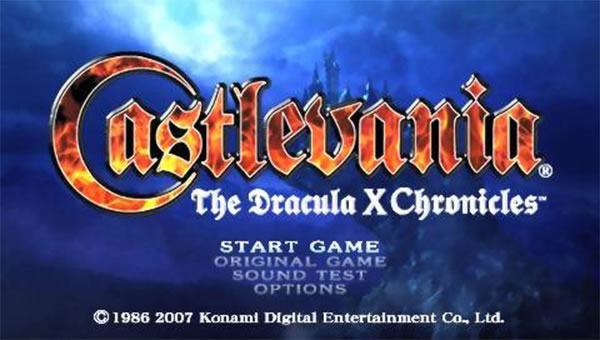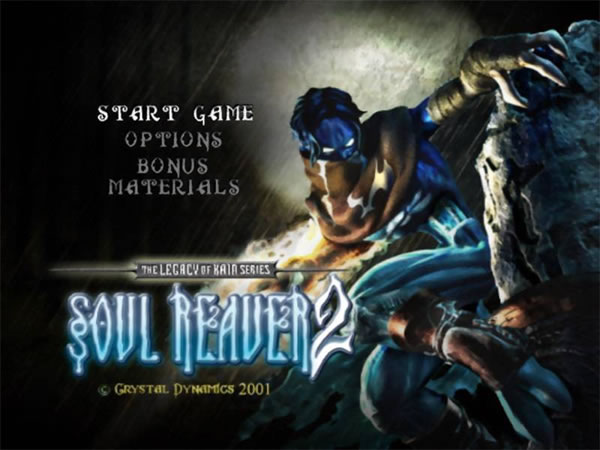- CLASSIC MAGAZINES
- REVIEW CREW
A show recapping what critics thought back
when classic games first came out! - NEXT GENERATION'S BEST & WORST
From the worst 1-star reviews to the best
5-stars can offer, this is Next Generation! - NINTENDO POWER (ARCHIVE)
Experience a variety of shows looking at the
often baffling history of Nintendo Power! - MAGAZINE RETROSPECTIVE
We're looking at the absolutely true history of
some of the most iconic game magazines ever! - SUPER PLAY'S TOP 600
The longest and most ambitious Super NES
countdown on the internet! - THEY SAID WHAT?
Debunking predictions and gossip found
in classic video game magazines! - NEXT GENERATION UNCOVERED
Cyril is back in this spin-off series, featuring the
cover critic review the art of Next Generation! - HARDCORE GAMER MAGAZING (PDF ISSUES)
Download all 36 issues of Hardcore Gamer
Magazine and relive the fun in PDF form!
- REVIEW CREW
- ELECTRONIC GAMING MONTHLY
- ELECTRONIC GAMING MONTHLY RANKS
From Mario to Sonic to Street Fighter, EGM
ranks classic game franchises and consoles! - ELECTRONIC GAMING MONTHLY BEST & WORST
Counting down EGM’s best and worst reviews
going year by year, from 1989 – 2009! - ELECTRONIC GAMING BEST & WORST AWARDS
11-part video series chronicling the ups and
downs of EGM’s Best & Worst Awards!
- ELECTRONIC GAMING MONTHLY RANKS
- GAME HISTORY
- GAME OVER: STORY BREAKDOWNS
Long-running series breaking down game
stories and analyzing their endings! - A BRIEF HISTORY OF GAMING w/ [NAME HERE]
Real history presented in a fun and pithy
format from a variety of game historians! - THE BLACK SHEEP
A series looking back at the black sheep
entries in popular game franchises! - INSTANT EXPERT
Everything you could possibly want to know
about a wide variety of gaming topics! - FREEZE FRAME
When something familiar happens in the games
industry, we're there to take a picture! - I'VE GOT YOUR NUMBER
Learn real video game history through a series
of number-themed episodes, starting at zero! - GREAT MOMENTS IN BAD ACTING
A joyous celebration of some of gaming's
absolute worst voice acting!
- GAME OVER: STORY BREAKDOWNS
- POPULAR SHOWS
- DG NEWS w/ LORNE RISELEY
Newsman Lorne Riseley hosts a regular
series looking at the hottest gaming news! - REVIEW REWIND
Cyril replays a game he reviewed 10+ years
ago to see if he got it right or wrong! - ON-RUNNING FEUDS
Defunct Games' longest-running show, with
editorials, observations and other fun oddities! - DEFUNCT GAMES QUIZ (ARCHIVE)
From online quizzes to game shows, we're
putting your video game knowledge to the test!- QUIZ: ONLINE PASS
Take a weekly quiz to see how well you know
the news and current gaming events! - QUIZ: KNOW THE GAME
One-on-one quiz show where contestants
find out if they actually know classic games! - QUIZ: THE LEADERBOARD
Can you guess the game based on the classic
review? Find out with The Leaderboard!
- QUIZ: ONLINE PASS
- DEFUNCT GAMES VS.
Cyril and the Defunct Games staff isn't afraid
to choose their favorite games and more! - CYRIL READS WORLDS OF POWER
Defunct Games recreates classic game
novelizations through the audio book format!
- DG NEWS w/ LORNE RISELEY
- COMEDY
- GAME EXPECTANCY
How long will your favorite hero live? We crunch
the numbers in this series about dying! - VIDEO GAME ADVICE
Famous game characters answer real personal
advice questions with a humorous slant! - FAKE GAMES: GUERILLA SCRAPBOOK
A long-running series about fake games and
the people who love them (covers included)! - WORST GAME EVER
A contest that attempts to create the worst
video game ever made, complete with covers! - LEVEL 1 STORIES
Literature based on the first stages of some
of your favorite classic video games! - THE COVER CRITIC
One of Defunct Games' earliest shows, Cover
Critic digs up some of the worst box art ever! - COMMERCIAL BREAK
Take a trip through some of the best and
worst video game advertisements of all time! - COMIC BOOK MODS
You've never seen comics like this before.
A curious mix of rewritten video game comics!
- GAME EXPECTANCY
- SERIES ARCHIVE
- NINTENDO SWITCH ONLINE ARCHIVE
A regularly-updated list of every Nintendo
Switch Online release, plus links to review! - PLAYSTATION PLUS CLASSIC ARCHIVE
A comprehensive list of every PlayStation
Plus classic release, including links! - RETRO-BIT PUBLISHING ARCHIVE
A regularly-updated list of every Retro-Bit
game released! - REVIEW MARATHONS w/ ADAM WALLACE
Join critic Adam Wallace as he takes us on a
classic review marathon with different themes!- DEFUNCT GAMES GOLF CLUB
Adam Wallace takes to the links to slice his way
through 72 classic golf game reviews! - 007 IN PIXELS
Adam Wallace takes on the world's greatest spy
as he reviews 15 weeks of James Bond games! - A SALUTE TO VAMPIRES
Adam Wallace is sinking his teeth into a series
covering Castlevania, BloodRayne and more! - CAPCOM'S CURSE
Adam Wallace is celebrating 13 days of Halloween
with a line-up of Capcom's scariest games! - THE FALL OF SUPERMAN
Adam Wallace is a man of steel for playing
some of the absolute worst Superman games! - THE 31 GAMES OF HALLOWEEN
Adam Wallace spends every day of October afraid
as he reviews some of the scariest games ever! - 12 WEEKS OF STAR TREK
Adam Wallace boldly goes where no critic has
gone before in this Star Trek marathon!
- DEFUNCT GAMES GOLF CLUB
- DAYS OF CHRISTMAS (ARCHIVE)
Annual holiday series with themed-episodes
that date all the way back to 2001!- 2015: 30 Ridiculous Retro Rumors
- 2014: 29 Magazines of Christmas
- 2013: 29 Questionable Power-Ups of Christmas
- 2012: 34 Theme Songs of Christmas
- 2011: 32 Game Endings of Christmas
- 2010: 31 Bonus Levels of Christmas
- 2009: 30 Genres of Christmas
- 2008: 29 Controls of Christmas
- 2007: 34 Cliches of Christmas
- 2006: 33 Consoles of Christmas
- 2005: 32 Articles of Christmas
- 2004: 31 Websites of Christmas
- 2003: 29 Issues of Christmas
- 2002: 28 Years of Christmas
- 2001: 33 Days of Christmas
- NINTENDO SWITCH ONLINE ARCHIVE
- REVIEW ARCHIVE
- FULL ARCHIVE
Dimo's Quest
In the original Dimo's Quest for the Amiga, a loveable frog hopped through dungeons collecting candy to appease a hungry king and win his daughter's hand in marriage. When it came time for the CD-i port of this title, marketing execs wanted to revamp the character into something cooler, more edgy perhaps. What resulted was what happened to many games in the early 1990s; a bland character was created to match the beach-bum aesthetic popular at the time.
The new Dimo now wears a sideways baseball cap above his shades and carries a skateboard (though there is no actual skating in the game). Trendy figures like Bart Simpson, Pauly Shore, Bill & Ted, and the Ninja Turtles were so beloved by the pre and early-teen demographic in the 90s that the decision to turn Dimo into a prepubescent Jeff Spicoli may have seemed sound at the time, but the character just comes off as an obvious gimmick. After hearing Dimo repeat default "cool" language like "cowabunga" and "dude", you will wish some random princess would kiss this misguided youth and turn him back into a frog.
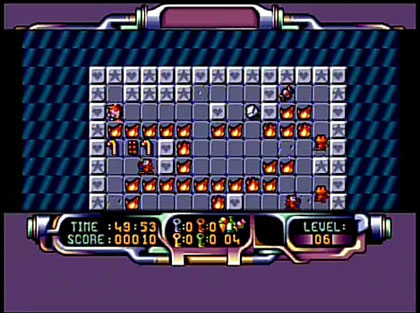
So now that we know who Dimo is, what is exactly is his "quest"? The word connotes great, daring adventures filled with honor and sacrifice and maidens and such. Since there is no in-game explanation, we must look to the instruction manual to find his objective. It reads: "Dimo has a sweet tooth and he's hooked! He'd be the coolest kid on the block but his candy mania gets him into trouble. Now he wants you to join him on a candy quest." So, in essence, we are playing this game to assist Dimo in his gluttonous greed. You collect all the candy on a level and exit to the next. It seems a simple collect-em-up at first, but after completing the first board, it reveals itself to be more sophisticated. Each level has its unique solution that requires both thought and dexterity. Thankfully, a good action-puzzle game does not need a good story nor an engaging character to be enjoyable.
Despite Dimo's questionable makeover, the gameplay stays intact from its Amiga counterpart. The 51 levels are the same, the graphics remain colorful, and the puzzles are cleverly designed. Like the freeware hit, Chip's Challenge, Dimo's Quest is a tile-based maze puzzler that relies on colored keys to solve most levels. Many of its puzzles are like those found in a Sokoban (box pushing) game, and therefore you will often need to reset the level if you push an object in the wrong direction or against a wall. It is clear that Dimo's Quest is highly indebted to previous puzzlers and adds only a few innovations to its own formula (namely, a remote controlled vacuum and a variety of weak and crumbling tiles). All in all, the real advantages that the supposedly cool Dimo has over the nerdy Chip are its graphics and a smoother frame rate (the screen doesn't stagger tile by tile).
Sometimes, however, Dimo's movements are a bit too smooth. It is too easy to glide over tiles at points and so you may find yourself twitching the d-pad very carefully in dangerous areas laden with bombs or pitfalls. This can be especially maddening in stages that have strict time limits. Even after knowing how to solve a maze, your precision can be easily ruined by even the lightest tap on the controller. It's like figuring out the proper path on a paper maze but the pencil point keeps breaking each time you approach the finish. The latter levels are for patient gamers only.

After the first ten mazes or so, most levels require a good deal of memory, thought, and timing to navigate successfully, and finishing just one feels rewarding in its own right. An eight-letter password is given at the completion of each board; every ten boards you are treated to a young cheesecake in a swimsuit posing seductively for the viewer (another fine example of over-selling your product for the adolescent mind). Games designed by Vision Factory (aka SPC Vision) all seem to share this bit of pandering as similar girls can be found in their other CD-i games, The Apprentice and Lucky Luke.
Overall, porting Dimo's Quest over to the CD-i was a good decision since the console's library lacks many good puzzlers and this genre never really goes out of style. If only its main character's style had not been so fleeting.
The new Dimo now wears a sideways baseball cap above his shades and carries a skateboard (though there is no actual skating in the game). Trendy figures like Bart Simpson, Pauly Shore, Bill & Ted, and the Ninja Turtles were so beloved by the pre and early-teen demographic in the 90s that the decision to turn Dimo into a prepubescent Jeff Spicoli may have seemed sound at the time, but the character just comes off as an obvious gimmick. After hearing Dimo repeat default "cool" language like "cowabunga" and "dude", you will wish some random princess would kiss this misguided youth and turn him back into a frog.

So now that we know who Dimo is, what is exactly is his "quest"? The word connotes great, daring adventures filled with honor and sacrifice and maidens and such. Since there is no in-game explanation, we must look to the instruction manual to find his objective. It reads: "Dimo has a sweet tooth and he's hooked! He'd be the coolest kid on the block but his candy mania gets him into trouble. Now he wants you to join him on a candy quest." So, in essence, we are playing this game to assist Dimo in his gluttonous greed. You collect all the candy on a level and exit to the next. It seems a simple collect-em-up at first, but after completing the first board, it reveals itself to be more sophisticated. Each level has its unique solution that requires both thought and dexterity. Thankfully, a good action-puzzle game does not need a good story nor an engaging character to be enjoyable.
Despite Dimo's questionable makeover, the gameplay stays intact from its Amiga counterpart. The 51 levels are the same, the graphics remain colorful, and the puzzles are cleverly designed. Like the freeware hit, Chip's Challenge, Dimo's Quest is a tile-based maze puzzler that relies on colored keys to solve most levels. Many of its puzzles are like those found in a Sokoban (box pushing) game, and therefore you will often need to reset the level if you push an object in the wrong direction or against a wall. It is clear that Dimo's Quest is highly indebted to previous puzzlers and adds only a few innovations to its own formula (namely, a remote controlled vacuum and a variety of weak and crumbling tiles). All in all, the real advantages that the supposedly cool Dimo has over the nerdy Chip are its graphics and a smoother frame rate (the screen doesn't stagger tile by tile).
Sometimes, however, Dimo's movements are a bit too smooth. It is too easy to glide over tiles at points and so you may find yourself twitching the d-pad very carefully in dangerous areas laden with bombs or pitfalls. This can be especially maddening in stages that have strict time limits. Even after knowing how to solve a maze, your precision can be easily ruined by even the lightest tap on the controller. It's like figuring out the proper path on a paper maze but the pencil point keeps breaking each time you approach the finish. The latter levels are for patient gamers only.

After the first ten mazes or so, most levels require a good deal of memory, thought, and timing to navigate successfully, and finishing just one feels rewarding in its own right. An eight-letter password is given at the completion of each board; every ten boards you are treated to a young cheesecake in a swimsuit posing seductively for the viewer (another fine example of over-selling your product for the adolescent mind). Games designed by Vision Factory (aka SPC Vision) all seem to share this bit of pandering as similar girls can be found in their other CD-i games, The Apprentice and Lucky Luke.
Overall, porting Dimo's Quest over to the CD-i was a good decision since the console's library lacks many good puzzlers and this genre never really goes out of style. If only its main character's style had not been so fleeting.
HOME |
CONTACT |
NOW HIRING |
WHAT IS DEFUNCT GAMES? |
NINTENDO SWITCH ONLINE |
RETRO-BIT PUBLISHING
Retro-Bit |
Switch Planet |
The Halcyon Show |
Same Name, Different Game |
Dragnix |
Press the Buttons
Game Zone Online | Hardcore Gamer | The Dreamcast Junkyard | Video Game Blogger
Dr Strife | Games For Lunch | Mondo Cool Cast | Boxed Pixels | Sega CD Universe | Gaming Trend
Game Zone Online | Hardcore Gamer | The Dreamcast Junkyard | Video Game Blogger
Dr Strife | Games For Lunch | Mondo Cool Cast | Boxed Pixels | Sega CD Universe | Gaming Trend
Copyright © 2001-2025 Defunct Games
All rights reserved. All trademarks are properties of their respective owners.
All rights reserved. All trademarks are properties of their respective owners.






